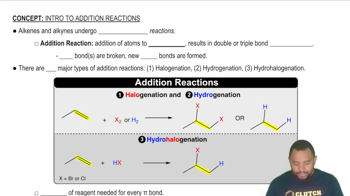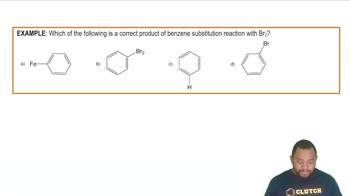Textbook Question
Identify the type of reaction for the following:
a.
b.
 Verified step by step guidance
Verified step by step guidance Verified video answer for a similar problem:
Verified video answer for a similar problem:



 1:11m
1:11mMaster Halogenation Reactions Concept 1 with a bite sized video explanation from Jules
Start learning